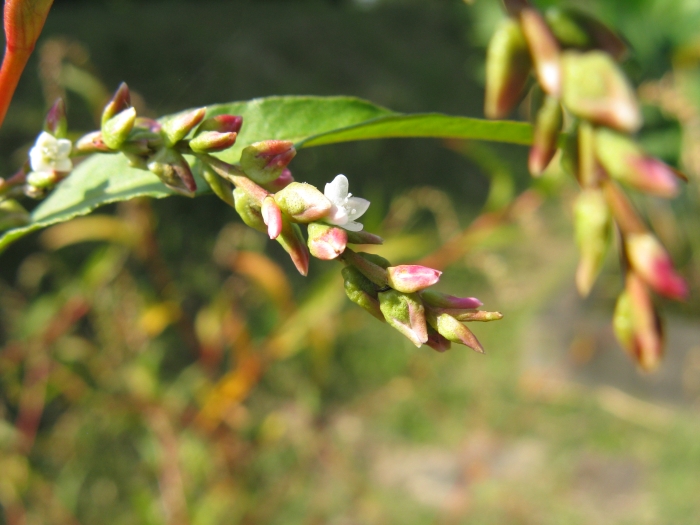Marshpepper Knotweed
(Persicaria hydropiper)
Marshpepper Knotweed (Persicaria hydropiper)
/
/

KENPEI
CC BY-SA 3.0
Image By:
KENPEI
Recorded By:
Copyright:
CC BY-SA 3.0
Copyright Notice:
Photo by: KENPEI | License Type: CC BY-SA 3.0 | License URL: http://creativecommons.org/licenses/by-sa/3.0/ | Uploader: KENPEI | Publisher: Wikimedia Commons | Title: Polygonum_hydropiper3.jpg | Notes: User created page with UploadWizard |


















































Estimated Native Range
Summary
Persicaria hydropiper, commonly known as Marshpepper Knotweed, is an annual herb that thrives in wetlands, marshes, and along stream banks in its native regions of Asia and Europe. It can grow to a height of 20 to 70 cm (8 to 28 inches) with an erect stem and lance-shaped leaves that are almost stalkless. The plant is notable for its small, inconspicuous flowers that are greenish-white with a hint of red, blooming in the spring and summer. The flowers are not particularly showy, but they do attract pollinators such as insects.
Marshpepper Knotweed is valued for its medicinal properties, as it has been used traditionally to treat various ailments. It is also considered for its potential use in phytoremediation due to its ability to grow in wet, contaminated soils. In cultivation, it requires full sun to part shade, consistent moisture, and can tolerate a range of soil types, though it prefers slow-draining, wet soils. It is often found in water gardens and as a part of naturalistic plantings in wetland restoration projects. However, gardeners should be cautious as Persicaria hydropiper can be potentially invasive outside its native range, particularly in the United States, and it may require management to prevent unwanted spread.CC BY-SA 4.0
Marshpepper Knotweed is valued for its medicinal properties, as it has been used traditionally to treat various ailments. It is also considered for its potential use in phytoremediation due to its ability to grow in wet, contaminated soils. In cultivation, it requires full sun to part shade, consistent moisture, and can tolerate a range of soil types, though it prefers slow-draining, wet soils. It is often found in water gardens and as a part of naturalistic plantings in wetland restoration projects. However, gardeners should be cautious as Persicaria hydropiper can be potentially invasive outside its native range, particularly in the United States, and it may require management to prevent unwanted spread.CC BY-SA 4.0
Plant Description
- Plant Type: Herb
- Height: 1-2 feet
- Width: 0.15-0.3 feet
- Growth Rate: Rapid
- Flower Color: N/A
- Flowering Season: Spring, Summer
- Leaf Retention:
Growth Requirements
- Sun: Full Sun
- Water: High
- Drainage: Slow
Common Uses
Bee Garden, Bird Garden, Butterfly Garden, Edible*Disclaimer: Easyscape's listed plant edibility is for informational use. Always verify the safety and proper identification of any plant before consumption., Water Garden
Natural Habitat
Wetlands, marshes, and along stream banks in Asia and Europe
Other Names
Common Names: Water-Pepper, Arse Smart, Tade, Wasserpfeffer-Knöterich, Wasserpfeffer, Waterpeper
Scientific Names: , Persicaria hydropiper, Polygonum escluseanum, Polygonum insolitum, Polygonum pallidum, Polygonum vasconicum,
GBIF Accepted Name: Persicaria hydropiper (L.) Spach